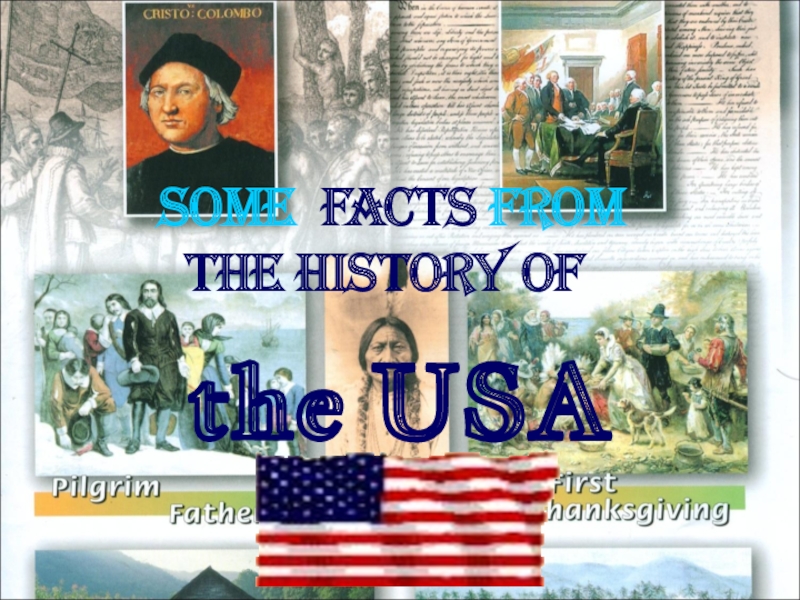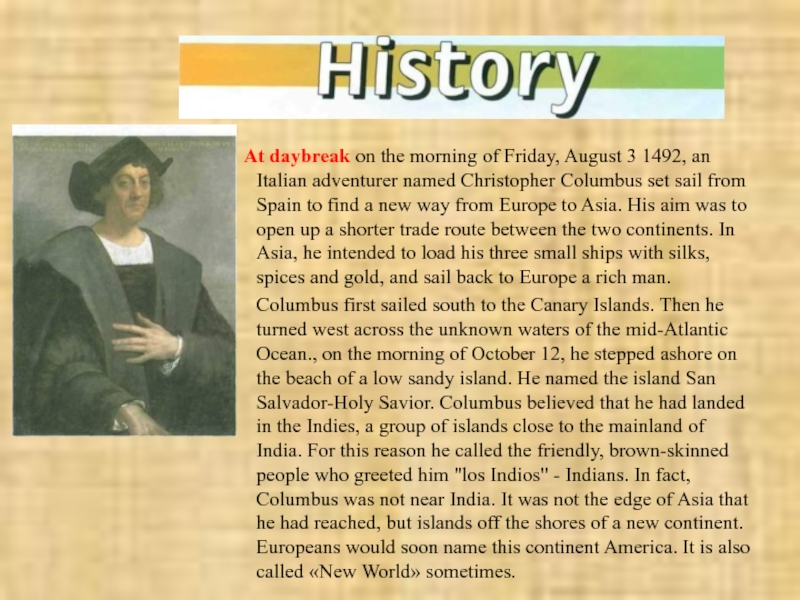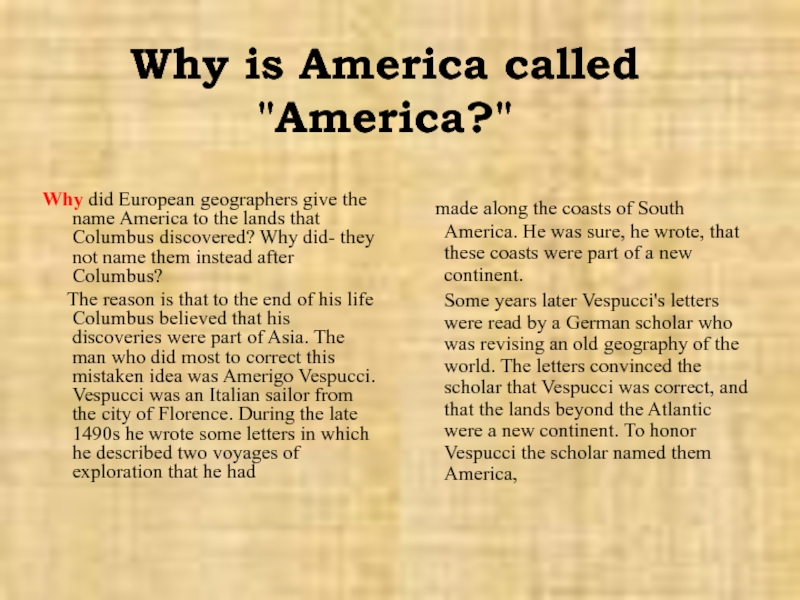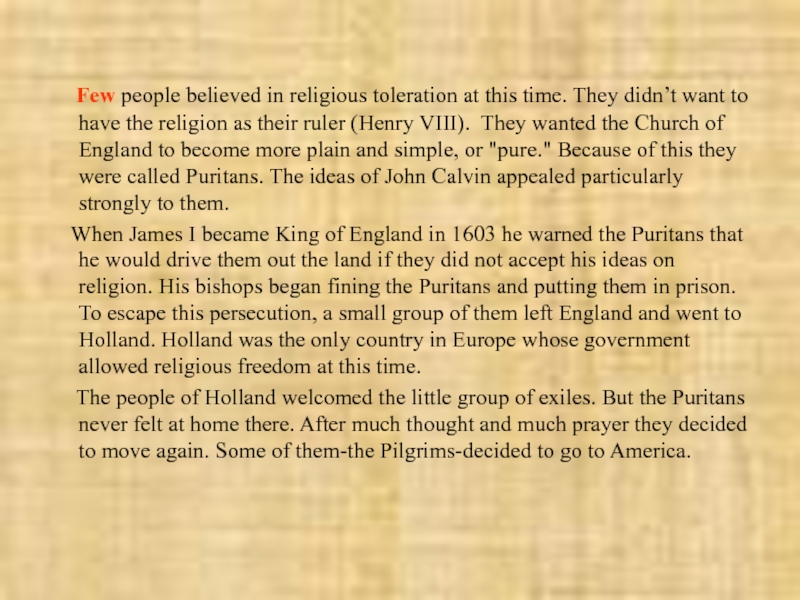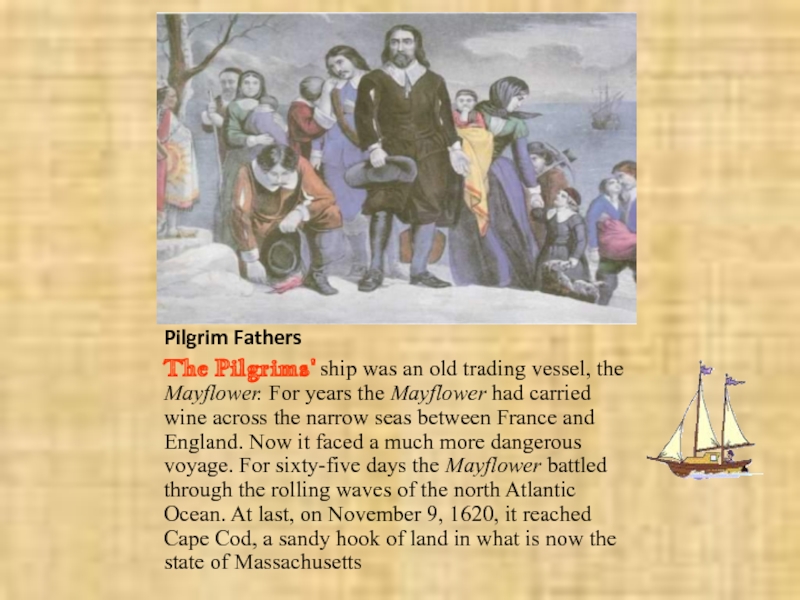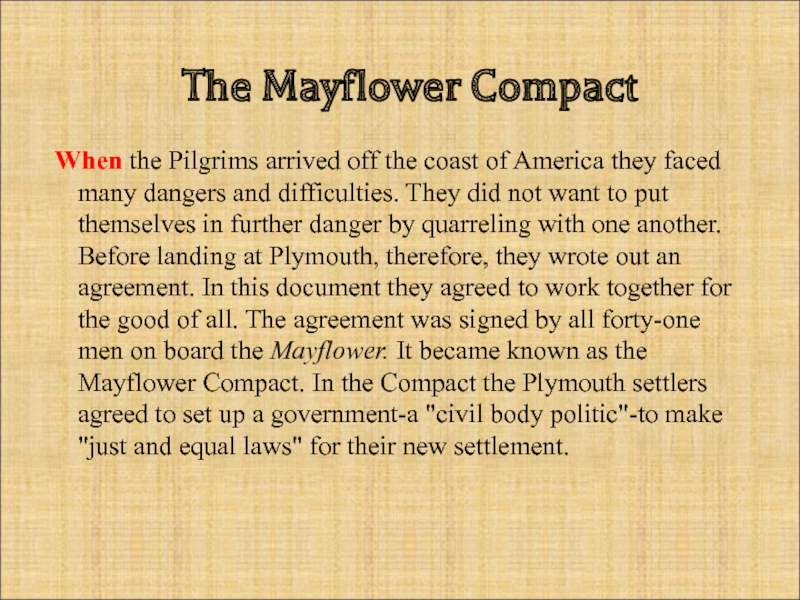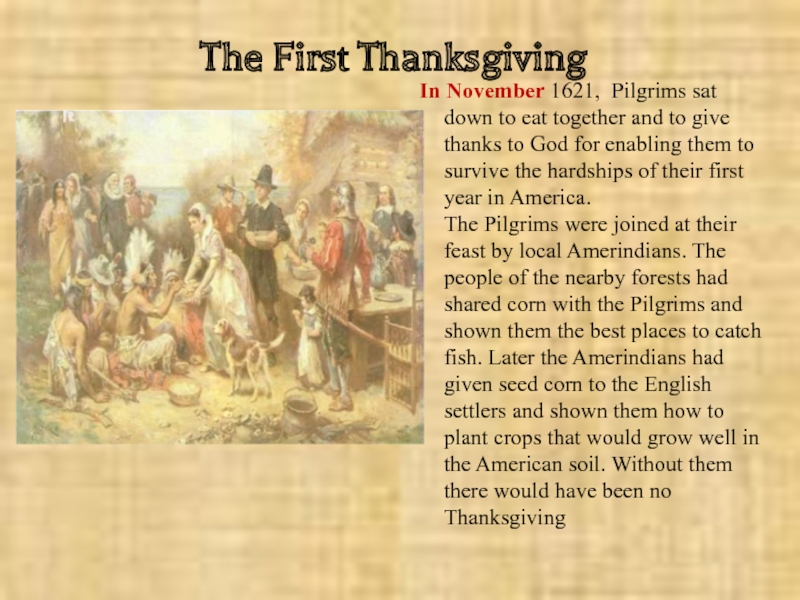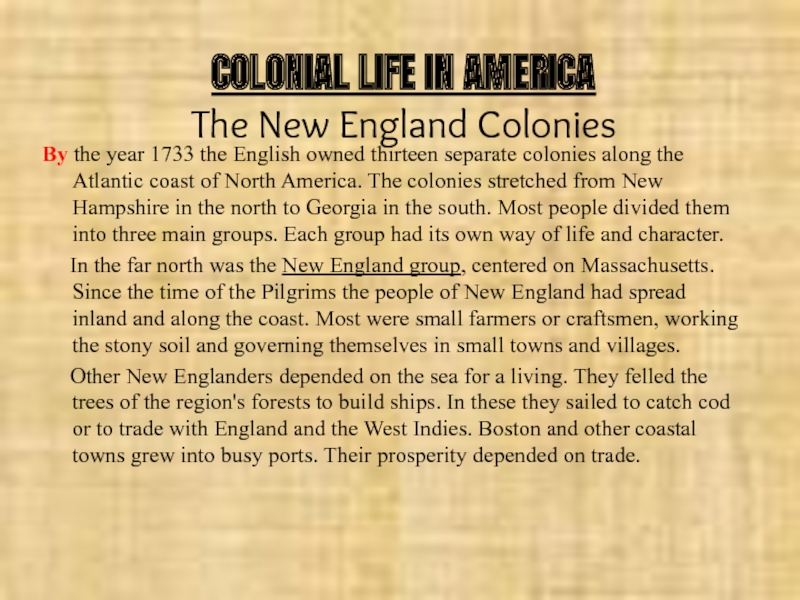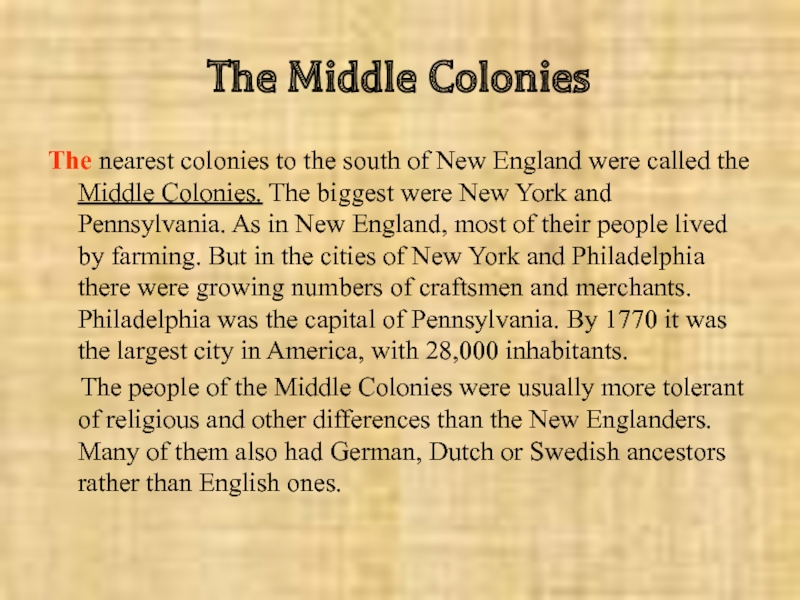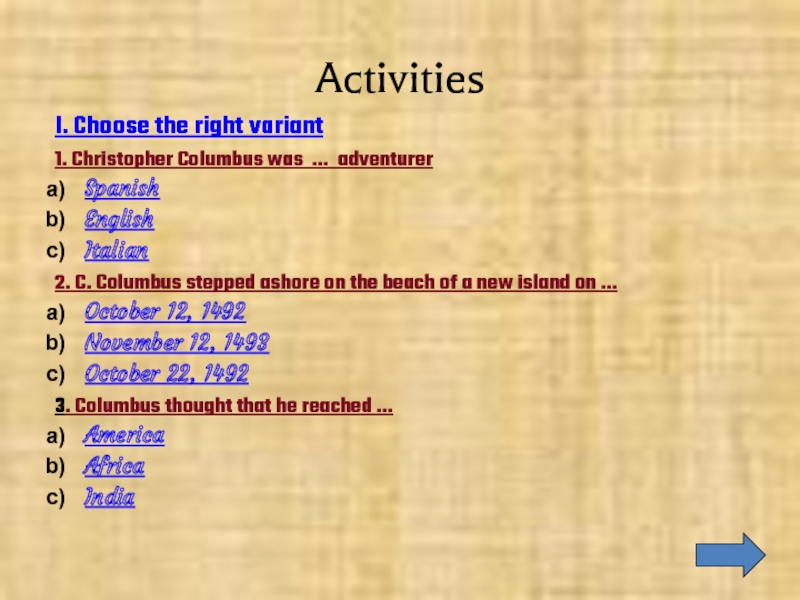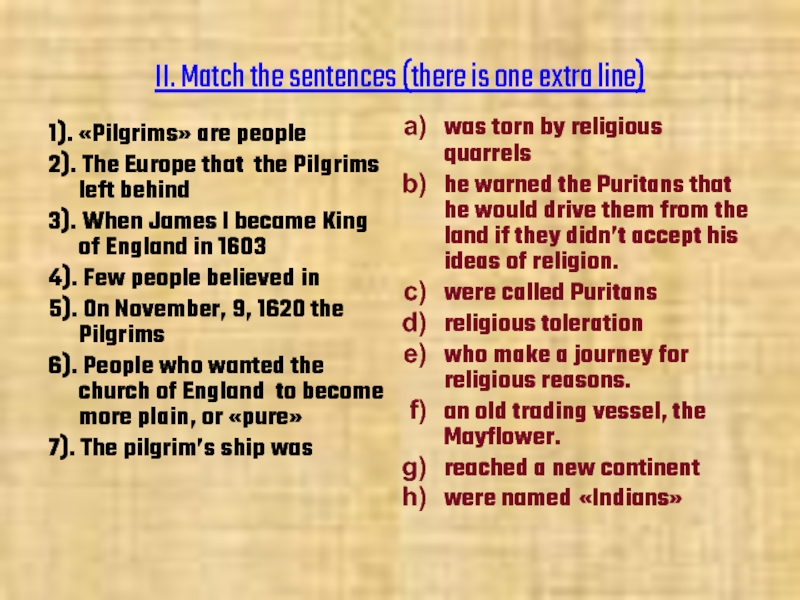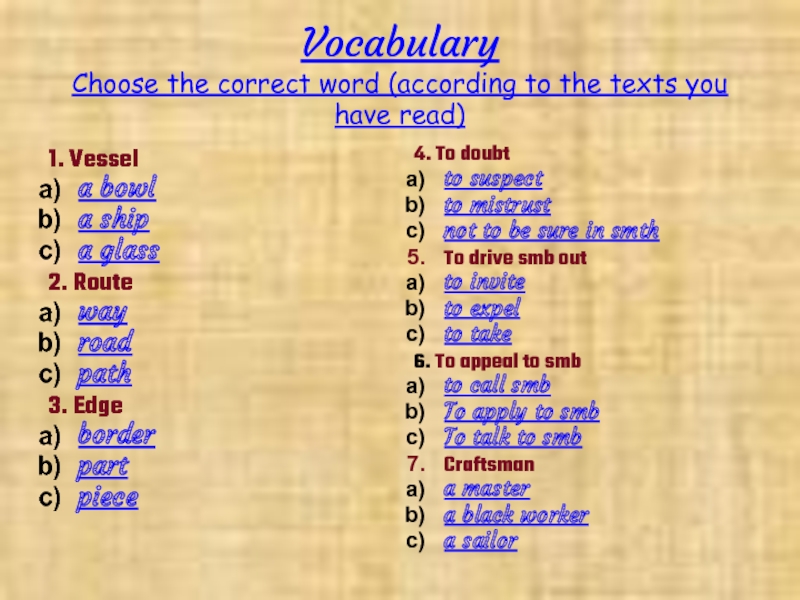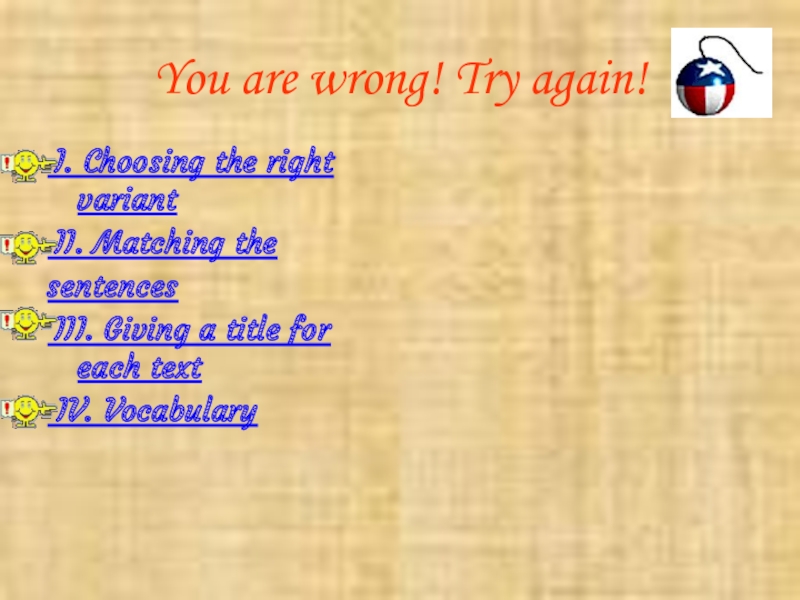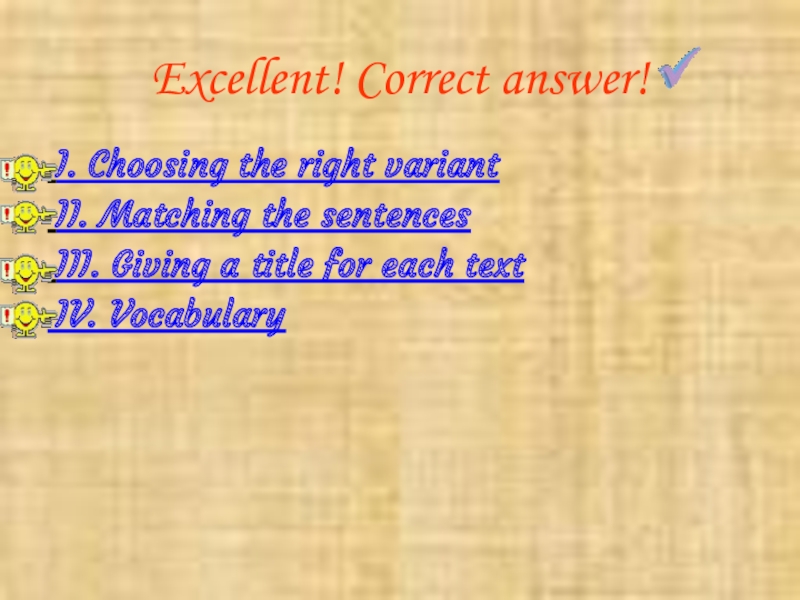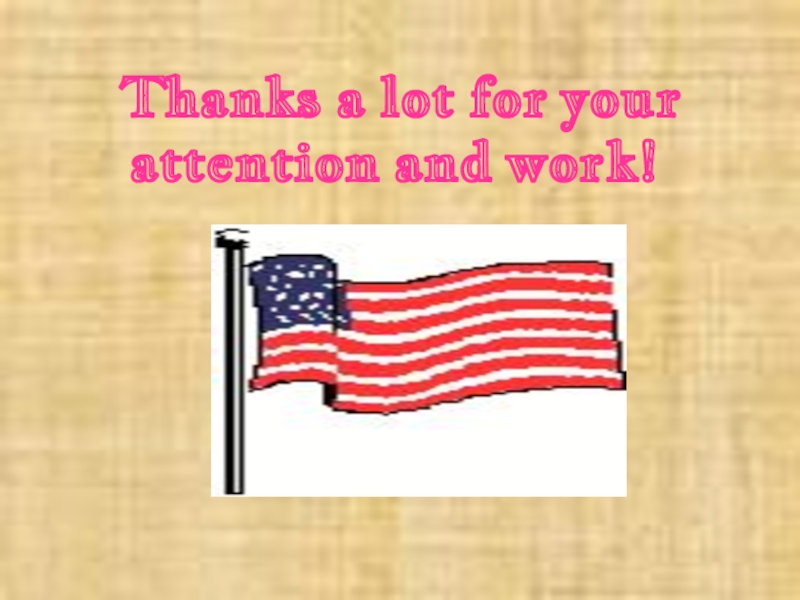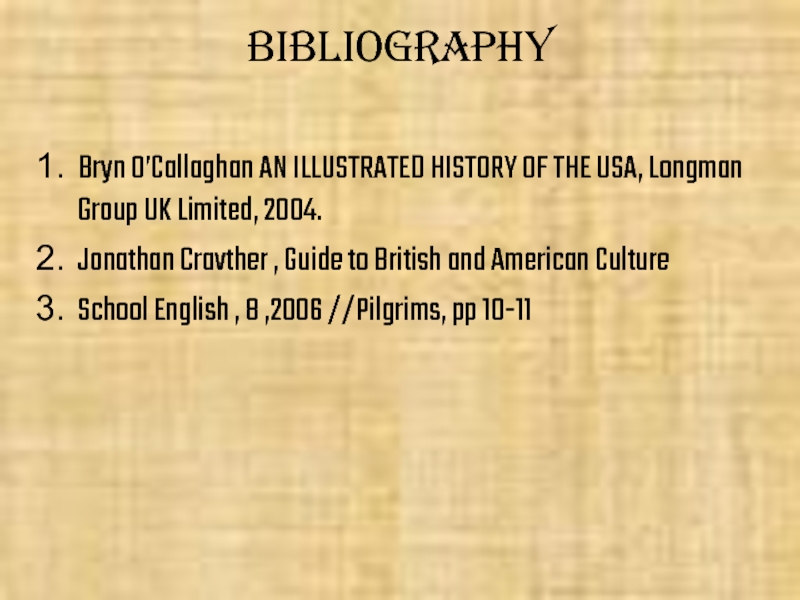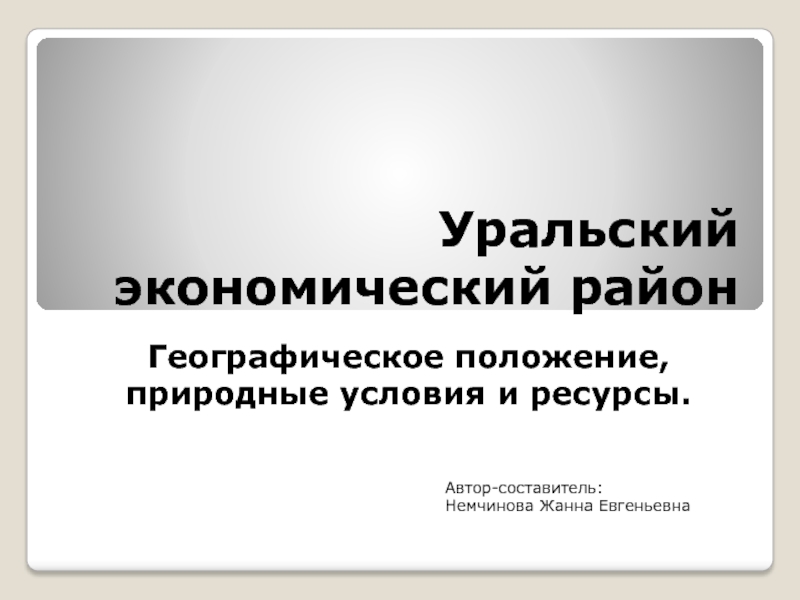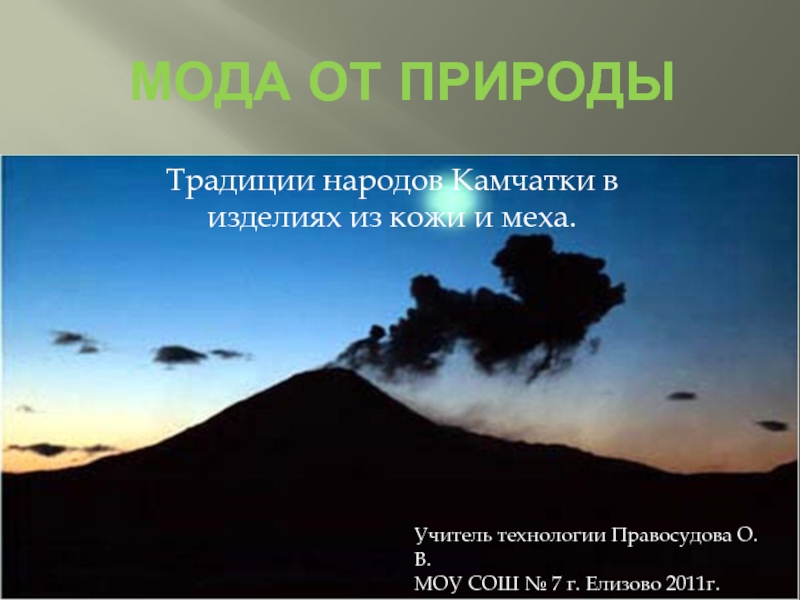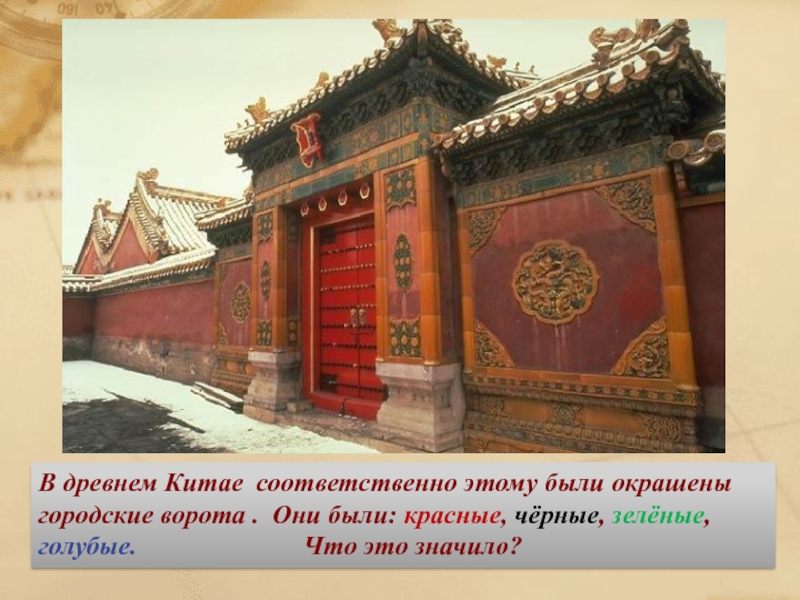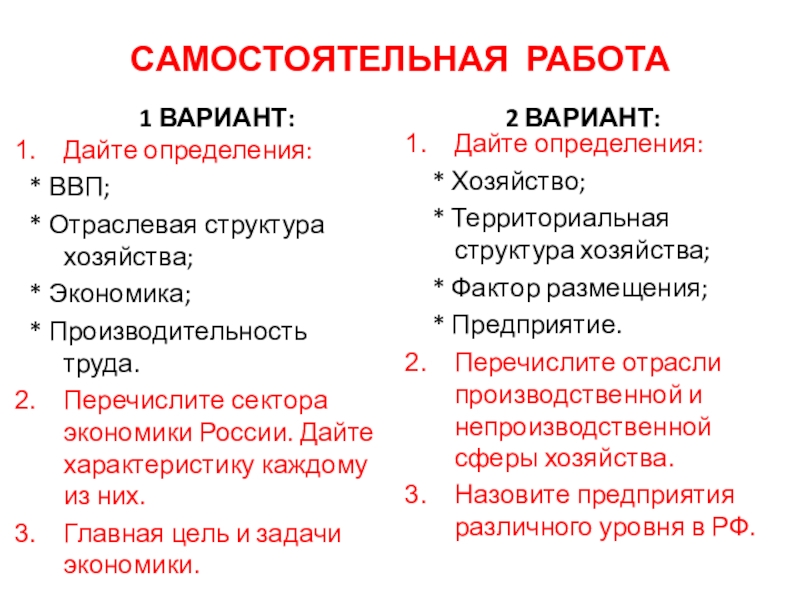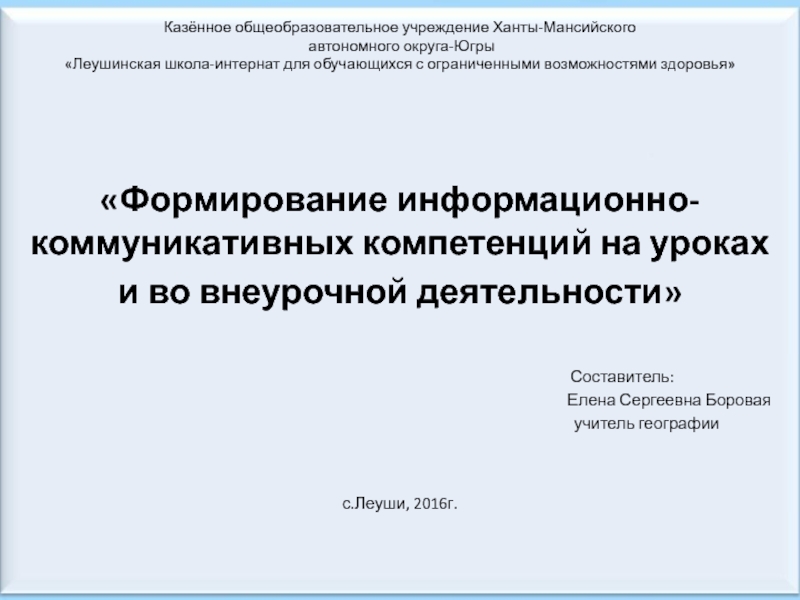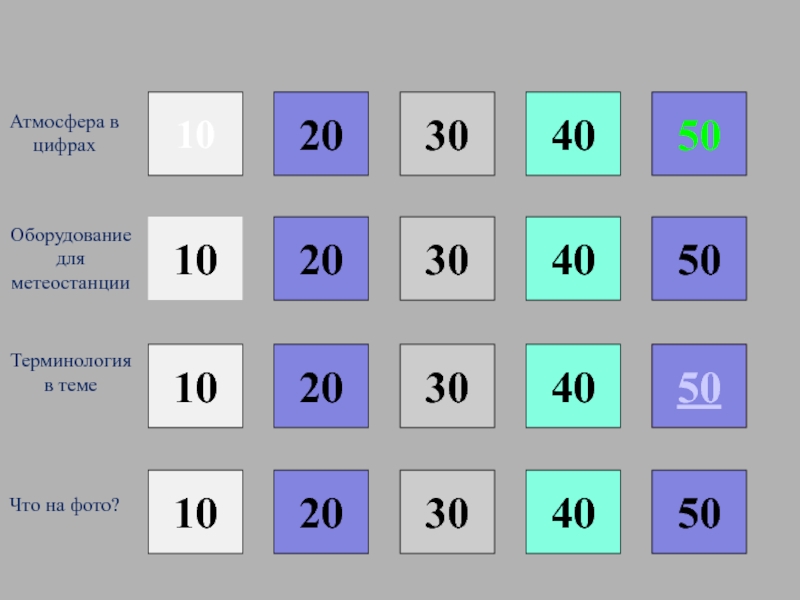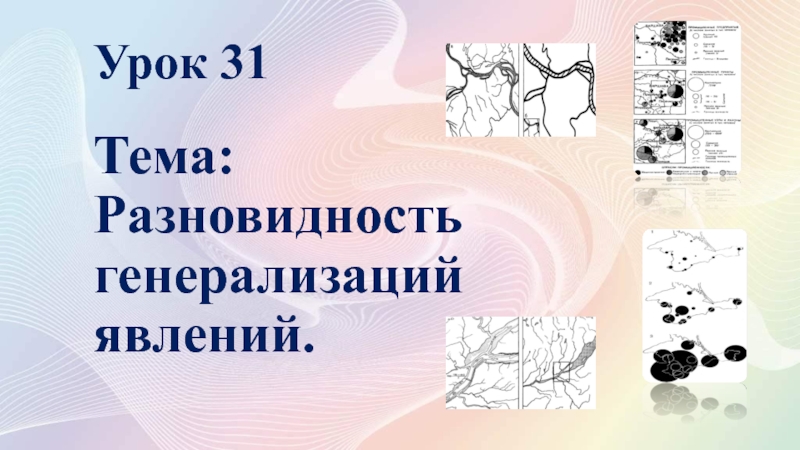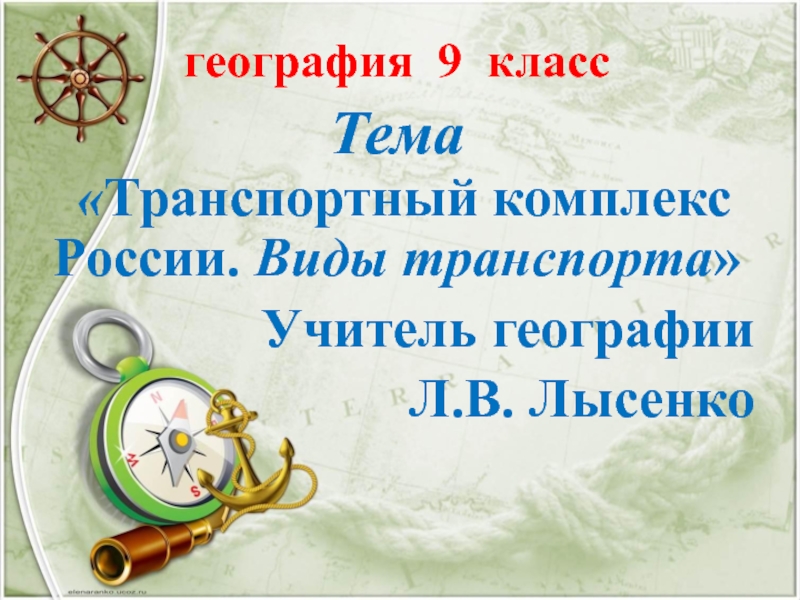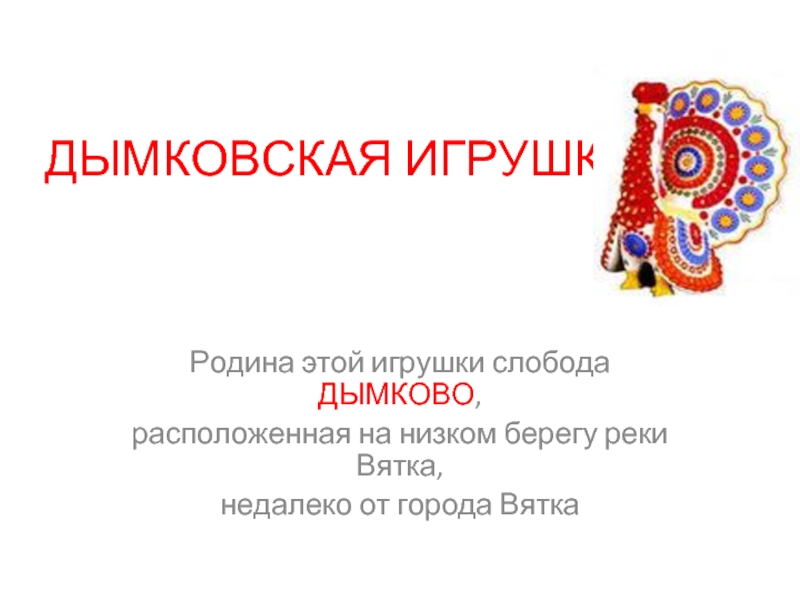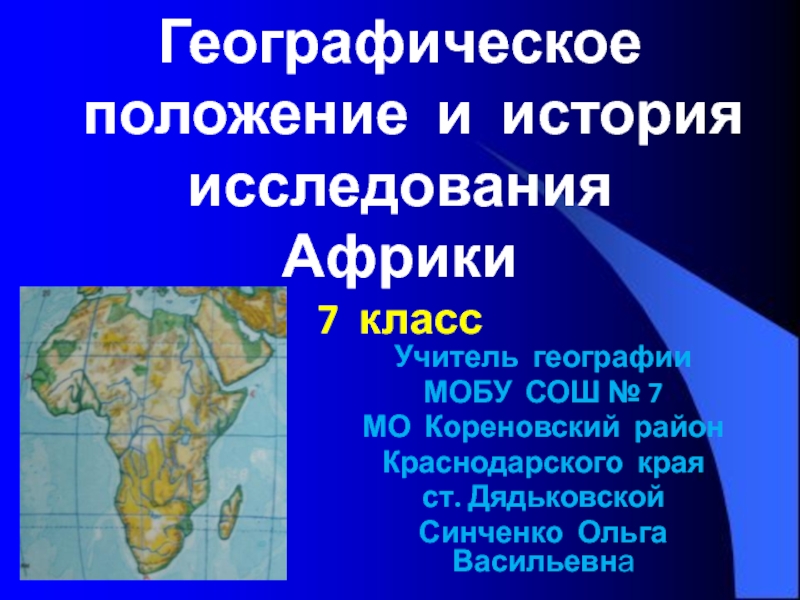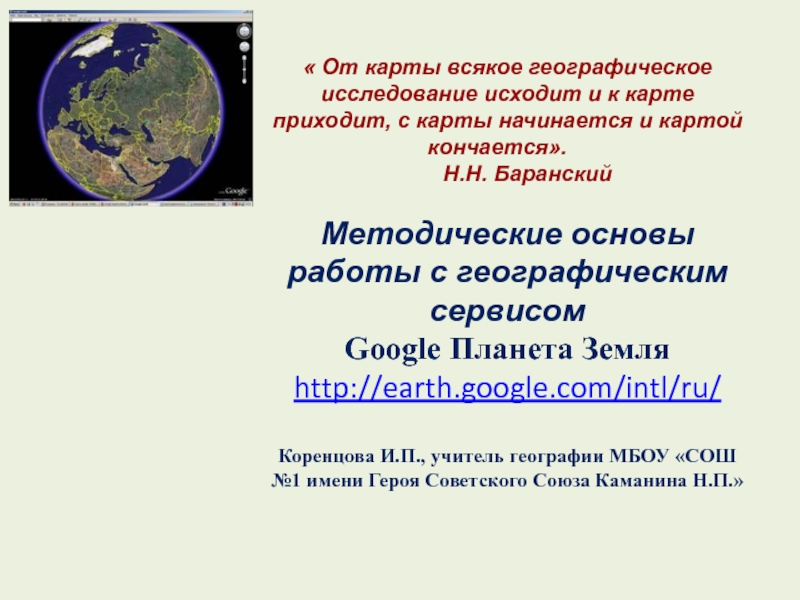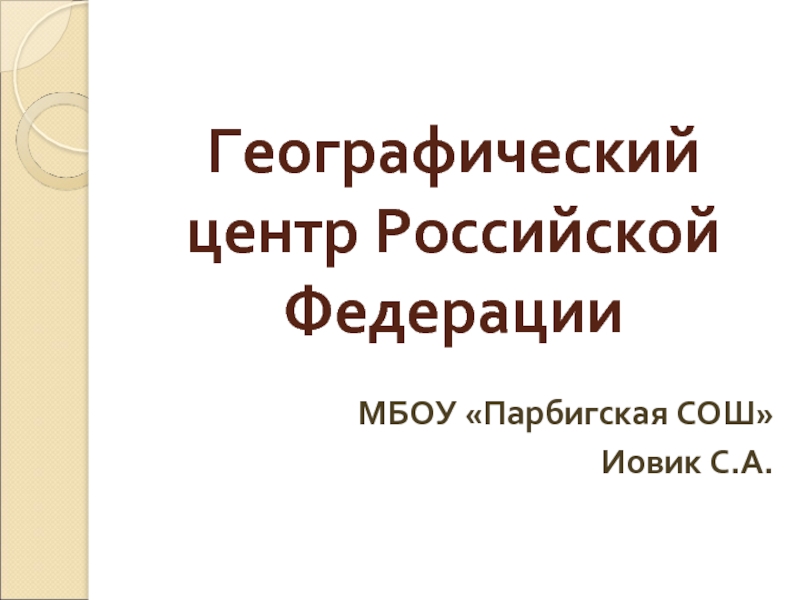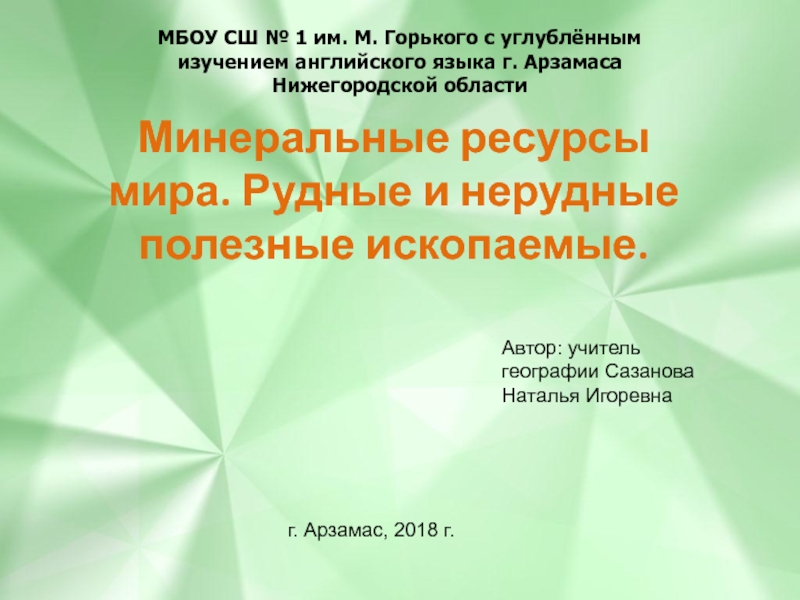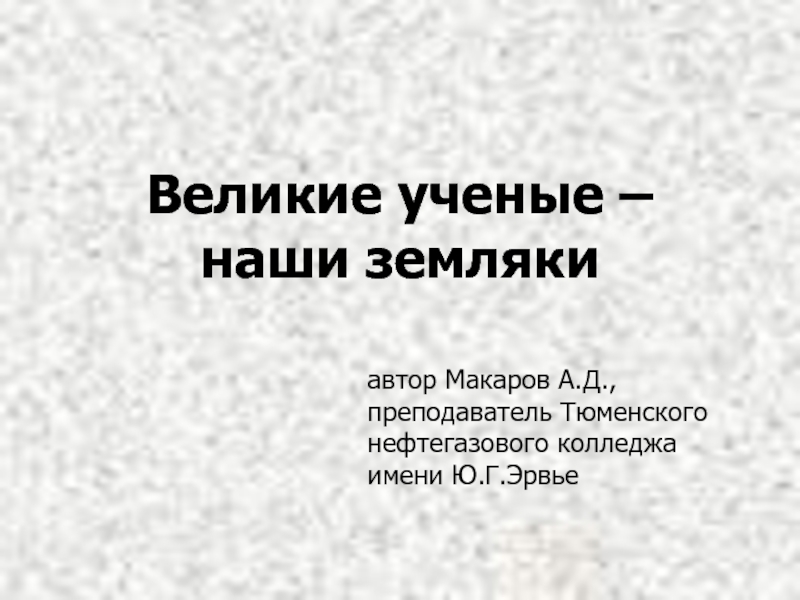Разделы презентаций
- Разное
- Английский язык
- Астрономия
- Алгебра
- Биология
- География
- Геометрия
- Детские презентации
- Информатика
- История
- Литература
- Математика
- Медицина
- Менеджмент
- Музыка
- МХК
- Немецкий язык
- ОБЖ
- Обществознание
- Окружающий мир
- Педагогика
- Русский язык
- Технология
- Физика
- Философия
- Химия
- Шаблоны, картинки для презентаций
- Экология
- Экономика
- Юриспруденция
Some facts from the history of the USA
Содержание
- 1. Some facts from the history of the USA
- 2. At daybreak on the morning
- 3. Why is America called "America?" Why did
- 4. The Pilgrims"Pilgrims" are people who make a
- 5. Few people believed in religious
- 6. Pilgrim FathersThe Pilgrims' ship was an old
- 7. The Mayflower Compact When the Pilgrims
- 8. The First Thanksgiving In November 1621, Pilgrims
- 9. COLONIAL LIFE IN AMERICA The New England
- 10. The Middle ColoniesThe nearest colonies to the
- 11. The Southern ColoniesThe Southern Colonies of Virginia,
- 12. ActivitiesI. Choose the right variant1. Christopher Columbus
- 13. 4. How do Europeans call America?«New World»
- 14. II. Match the sentences (there is one
- 15. III. Give a title (A, B, or
- 16. Vocabulary Choose the correct word (according to
- 17. You are wrong! Try again! I. Choosing
- 18. Excellent! Correct answer! I. Choosing the right
- 19. KeysI. Choose the right variant: 1-c; 2-a;
- 20. Thanks a lot for your attention and work!
- 21. Bibliography Bryn O’Callaghan AN ILLUSTRATED HISTORY OF
- 22. Скачать презентанцию
Слайды и текст этой презентации
Слайд 2
At daybreak on the morning of Friday, August
3 1492, an Italian adventurer named Christopher Columbus set sail
from Spain to find a new way from Europe to Asia. His aim was to open up a shorter trade route between the two continents. In Asia, he intended to load his three small ships with silks, spices and gold, and sail back to Europe a rich man.Columbus first sailed south to the Canary Islands. Then he turned west across the unknown waters of the mid-Atlantic Ocean., on the morning of October 12, he stepped ashore on the beach of a low sandy island. He named the island San Salvador-Holy Savior. Columbus believed that he had landed in the Indies, a group of islands close to the mainland of India. For this reason he called the friendly, brown-skinned people who greeted him "los Indios" - Indians. In fact, Columbus was not near India. It was not the edge of Asia that he had reached, but islands off the shores of a new continent. Europeans would soon name this continent America. It is also called «New World» sometimes.
Слайд 3Why is America called "America?"
Why did European geographers give the
name America to the lands that Columbus discovered? Why did-
they not name them instead after Columbus?The reason is that to the end of his life Columbus believed that his discoveries were part of Asia. The man who did most to correct this mistaken idea was Amerigo Vespucci. Vespucci was an Italian sailor from the city of Florence. During the late 1490s he wrote some letters in which he described two voyages of exploration that he had
made along the coasts of South America. He was sure, he wrote, that these coasts were part of a new continent.
Some years later Vespucci's letters were read by a German scholar who was revising an old geography of the world. The letters convinced the scholar that Vespucci was correct, and that the lands beyond the Atlantic were a new continent. To honor Vespucci the scholar named them America,
Слайд 4The Pilgrims
"Pilgrims" are people who make a journey for religious
reasons. But for Americans the word has a special meaning.
To them it means a small group of English men and women who sailed across the Atlantic Ocean in the year 1620. The group's members came to be called the Pilgrims because they went to America to find religious freedom. Sometimes Americans call them the Pilgrim Fathers. This is because they consider them as the most important of the founders of the future United States of America.The Europe that the Pilgrims left behind them was torn by religious quarrels. For more than a thousand years Roman Catholic Christianity had been the religion of most of its people. By the sixteenth century, however, some Europeans had begun to doubt the teachings of the Catholic Church. They were also growing angry at the wealth and worldly pride of its leaders
Слайд 5 Few people believed in religious toleration at this
time. They didn’t want to have the religion as their
ruler (Henry VIII). They wanted the Church of England to become more plain and simple, or "pure." Because of this they were called Puritans. The ideas of John Calvin appealed particularly strongly to them.When James I became King of England in 1603 he warned the Puritans that he would drive them out the land if they did not accept his ideas on religion. His bishops began fining the Puritans and putting them in prison. To escape this persecution, a small group of them left England and went to Holland. Holland was the only country in Europe whose government allowed religious freedom at this time.
The people of Holland welcomed the little group of exiles. But the Puritans never felt at home there. After much thought and much prayer they decided to move again. Some of them-the Pilgrims-decided to go to America.
Слайд 6Pilgrim Fathers
The Pilgrims' ship was an old trading vessel, the
Mayflower. For years the Mayflower had carried wine across the
narrow seas between France and England. Now it faced a much more dangerous voyage. For sixty-five days the Mayflower battled through the rolling waves of the north Atlantic Ocean. At last, on November 9, 1620, it reached Cape Cod, a sandy hook of land in what is now the state of MassachusettsСлайд 7The Mayflower Compact
When the Pilgrims arrived off the coast
of America they faced many dangers and difficulties. They did
not want to put themselves in further danger by quarreling with one another. Before landing at Plymouth, therefore, they wrote out an agreement. In this document they agreed to work together for the good of all. The agreement was signed by all forty-one men on board the Mayflower. It became known as the Mayflower Compact. In the Compact the Plymouth settlers agreed to set up a government-a "civil body politic"-to make "just and equal laws" for their new settlement.Слайд 8The First Thanksgiving
In November 1621, Pilgrims sat down to
eat together and to give thanks to God for enabling
them to survive the hardships of their first year in America. The Pilgrims were joined at their feast by local Amerindians. The people of the nearby forests had shared corn with the Pilgrims and shown them the best places to catch fish. Later the Amerindians had given seed corn to the English settlers and shown them how to plant crops that would grow well in the American soil. Without them there would have been no ThanksgivingСлайд 9COLONIAL LIFE IN AMERICA
The New England Colonies
By the year 1733
the English owned thirteen separate colonies along the Atlantic coast
of North America. The colonies stretched from New Hampshire in the north to Georgia in the south. Most people divided them into three main groups. Each group had its own way of life and character.In the far north was the New England group, centered on Massachusetts. Since the time of the Pilgrims the people of New England had spread inland and along the coast. Most were small farmers or craftsmen, working the stony soil and governing themselves in small towns and villages.
Other New Englanders depended on the sea for a living. They felled the trees of the region's forests to build ships. In these they sailed to catch cod or to trade with England and the West Indies. Boston and other coastal towns grew into busy ports. Their prosperity depended on trade.
Слайд 10The Middle Colonies
The nearest colonies to the south of New
England were called the Middle Colonies. The biggest were New
York and Pennsylvania. As in New England, most of their people lived by farming. But in the cities of New York and Philadelphia there were growing numbers of craftsmen and merchants. Philadelphia was the capital of Pennsylvania. By 1770 it was the largest city in America, with 28,000 inhabitants.The people of the Middle Colonies were usually more tolerant of religious and other differences than the New Englanders. Many of them also had German, Dutch or Swedish ancestors rather than English ones.
Слайд 11The Southern Colonies
The Southern Colonies of Virginia, the Carolinas and
Georgia formed the third group. In their hot and fertile
river valleys wealthy landowners farmed large plantations. They lived in fine houses, with wide, cool verandahs from which they could look out over their fields of tobacco or cotton. Most of the work in the fields was done by black slaves. Slavery was rare in the other American colonies. But the prosperity of the plantation-owning southerners was already beginning to depend upon it.The houses of the southern plantation owners had expensive furniture, much of it imported from Europe.
Слайд 12Activities
I. Choose the right variant
1. Christopher Columbus was … adventurer
Spanish
English
Italian
2.
C. Columbus stepped ashore on the beach of a new
island on …October 12, 1492
November 12, 1493
October 22, 1492
3. Columbus thought that he reached …
America
Africa
India
Слайд 134. How do Europeans call America?
«New World»
«New Nation»
«New Country»
5.
«Mayflower» is …
a flower
a ship
an island
6. The first people to
celebrateThanksgiving were …
Indians
The Pilgrims
Christopher Columbus people
7. Mayflower Compact is …
a document
a letter
a ship
8. A small group of English men and women who sailed across the Atlantic Ocean in the year 1620 was called …
«pilgrims»
new founders
explorers
9. Why is America called America?
because its first people were Amerindians
In honor an Italian sailor Amerigo Vecpucci
Слайд 14II. Match the sentences (there is one extra line)
1). «Pilgrims»
are people
2). The Europe that the Pilgrims left behind
3). When
James I became King of England in 16034). Few people believed in
5). On November, 9, 1620 the Pilgrims
6). People who wanted the church of England to become more plain, or «pure»
7). The pilgrim’s ship was
was torn by religious quarrels
he warned the Puritans that he would drive them from the land if they didn’t accept his ideas of religion.
were called Puritans
religious toleration
who make a journey for religious reasons.
an old trading vessel, the Mayflower.
reached a new continent
were named «Indians»
Слайд 15III. Give a title (A, B, or C) for each
text (1, 2, 3)
The
people lived in fine houses, with wide, cool verandahs from which they could look out over their fields of tobacco or cotton. Most of the work in the fields was done by black slaves.Most of their people lived by farming. But in the cities of New York and Philadelphia there were growing numbers of craftsmen and merchants. Philadelphia was the capital of Pennsylvania
In the far north were colonies, centered on Massachusetts. Since the time of the Pilgrims, the people of these colonies had spread inland and along the coast. Most were small farmers or craftsmen, working the stony soil and governing themselves in small towns and villages.
The New England colonies
The Southern Colonies
The Middle Colonies
3
2
1
A
B
C
Слайд 16Vocabulary Choose the correct word (according to the texts you have
read)
1. Vessel
a bowl
a ship
a glass
2. Route
way
road
path
3. Edge
border
part
piece
4. To doubt
to suspect
to
mistrustnot to be sure in smth
To drive smb out
to invite
to expel
to take
6. To appeal to smb
to call smb
To apply to smb
To talk to smb
Craftsman
a master
a black worker
a sailor
Слайд 17You are wrong! Try again!
I. Choosing the right
variant
II. Matching the
sentences
III. Giving a title for
each text IV. Vocabulary
Слайд 18Excellent! Correct answer!
I. Choosing the right variant
II. Matching
the sentences
III. Giving a title for each text
IV. Vocabulary
Слайд 19Keys
I. Choose the right variant: 1-c; 2-a; 3-c; 4-a; 5-b;
6-b; 7-a; 8-a;
II. Match the sentences (there is one
extra line): 1- e; 2-a; 3-b; 4-d; 5-g; 6-c; 7-f; III. Give a title (A, B, or C) for each text (1, 2, 3): 1- b; 2- c; 3- a
Слайд 21Bibliography
Bryn O’Callaghan AN ILLUSTRATED HISTORY OF THE USA, Longman Group
UK Limited, 2004.
Jonathan Cravther , Guide to British and American
CultureSchool English , 8 ,2006 //Pilgrims, pp 10-11
